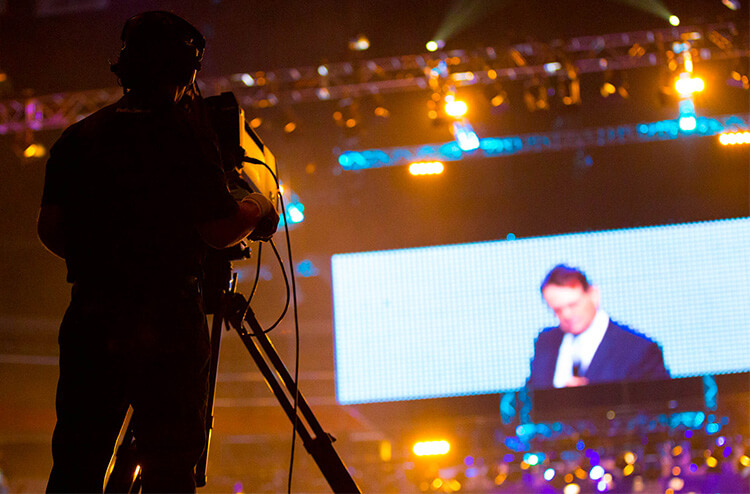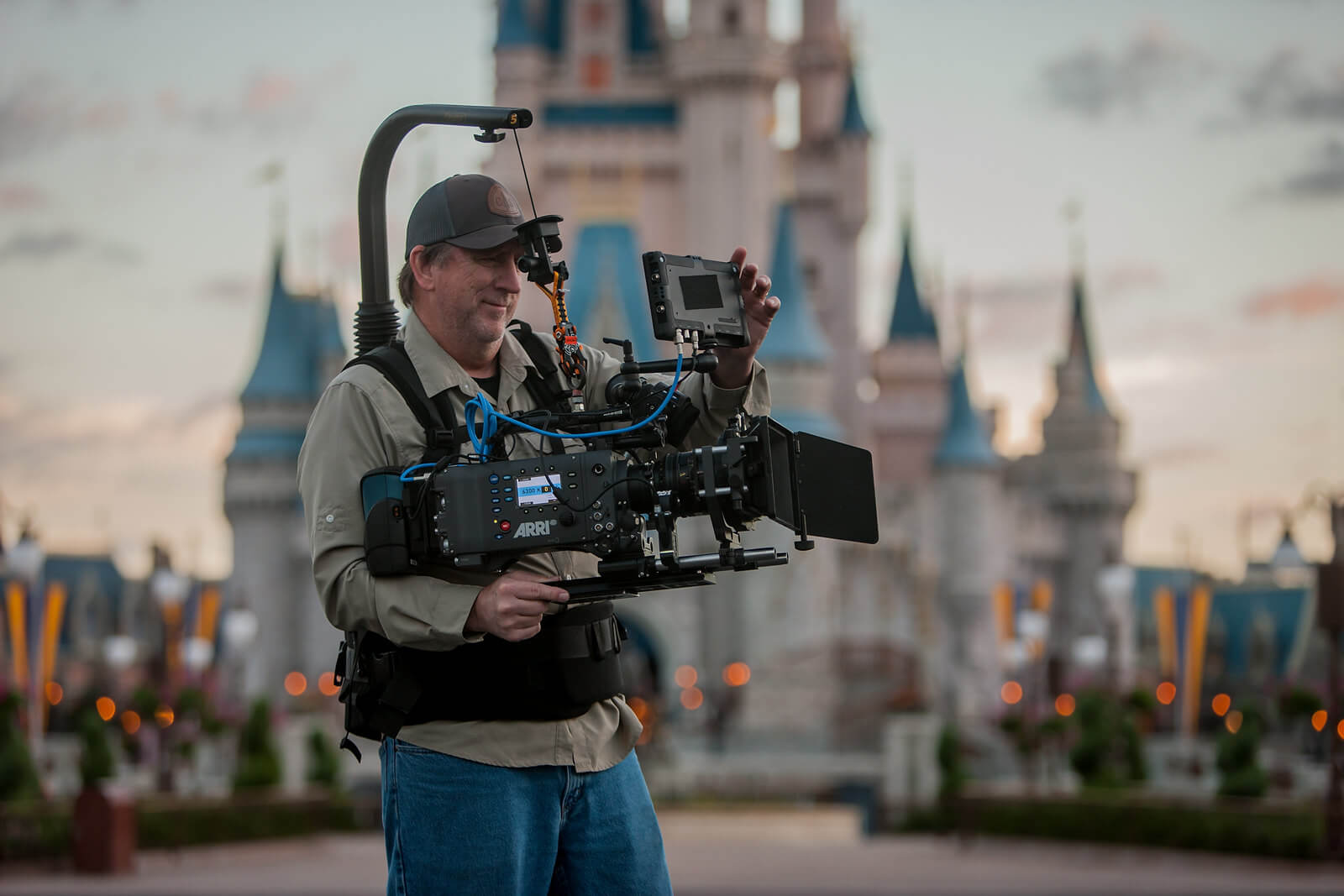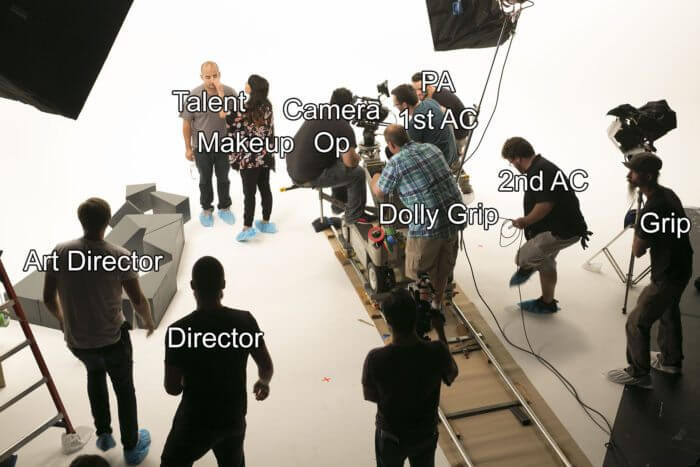Video Production Truck Crew: Who Does What?
Live mobile productions demand seamless teamwork, crystal-clear communication, and total precision—especially when there’s no second take. In this guide, we break down each video production truck crew role, so you know exactly who does what during high-pressure, real-time broadcasts.
All production is not created equal. Though mobile production and studio production are fundamentally the same thing – there are cameras involved and it takes a small army to pull off a shoot – but they are actually very very different from one another. You can take a look at our commercial crew guide to see what is typical of a commercial set, but in this guide you will see who can be expected at any mobile production shoot.
One of the main differences between commercial and mobile production is the live element. Whether it is event coverage or a live broadcast, there is only one chance to get the footage. Though some mobile production footage is edited later in post – generally the video production truck is living on a time delay of only a few seconds. That is just a few seconds for the crew to make sure that everything is perfect, with no chance for a do-over. Crystal clear communication in a high-speed environment takes a special kind of talent and total focus to excel. The production truck crew is as much a team as the ones they are covering during a game.
Read more: Why 4K Video Production Isn’t Just for TVs
Producer
This is the person in charge of the entire production from concept through final hand-off to the client. They perform the same duties as a commercial producer. They are essentially responsible for the broad view of content. Things like how many cameras will be needed, how long run time will be, how many commercial breaks and which commercials will be run, etc.
Read more: Live Video Production Breakthrough: NHK Brings Bullet Time to Real-Time Broadcasts
Director
If the producer has a global view of the production, the director oversees how it is executed. They choose what camera feeds to show, correct camera angles, what graphics should be inserted and so on. In addition to making these decisions on the spot, they direct the video production truck crew in real time. They call direction out over the intercom system to crew both in the truck and camera ops out in the field. Director and TD can sometimes be combined.
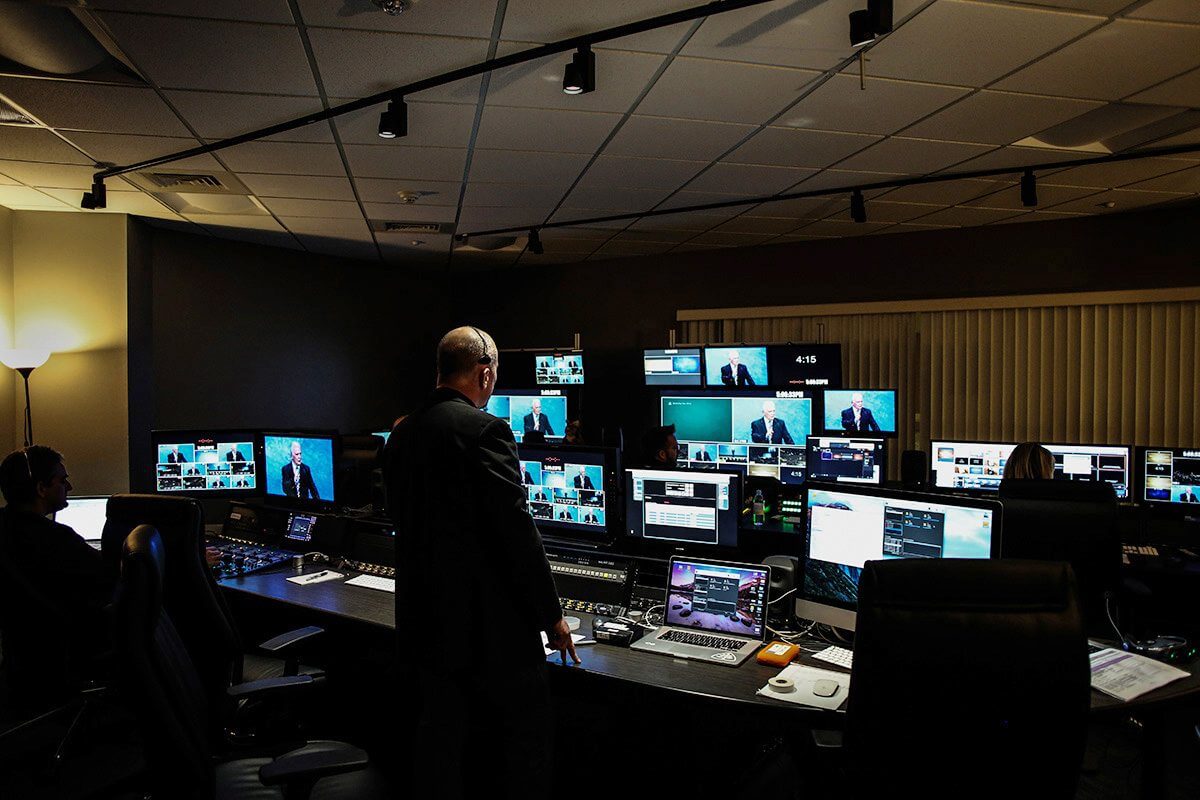
Technical Director (TD)
While the Director is calling out instructions to crew, the Technical Director is using a switcher to manually switch between camera feeds and other assets to make these calls happen on the final broadcast. They are stationed in front of a multiviewer monitor with live feeds from all cameras, replay decks, graphics computers, and a program view of what the viewers are seeing. Director and TD can sometimes be combined.
Read more: Why Outsourcing Video Production Makes Sense
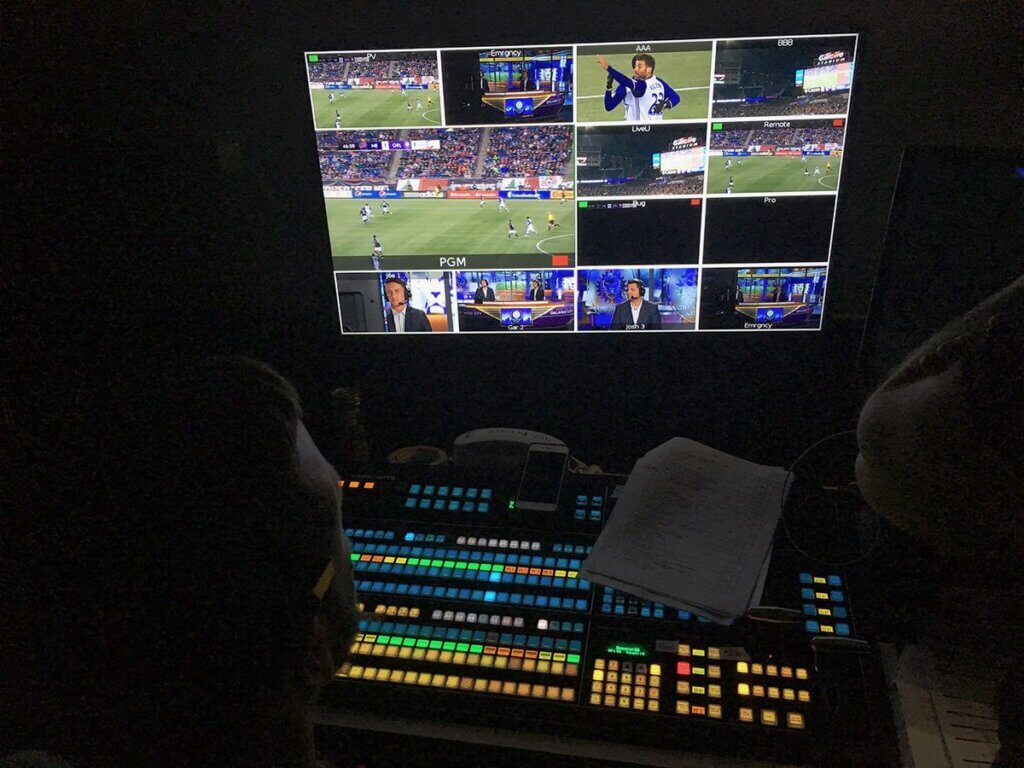
Engineer in Charge (EIC)
This person is the master of the video production truck and they manage all aspects of the truck including installation, maintenance and repair of all production equipment and peripherals. They are usually only attached to one video production truck at a time due to the complexities of the set up. Generally, they stay with the truck even when rented out to other clients to ensure success of the production and proper cabling/patching are used to set up equipment.
Tech Manager
All crew other than Directors, Producers and EIC report to the Tech Manager. They handle all technical aspects of the shoot for crew departments.
Camera Shader (V1/Video Technician)
This person makes sure that the look from all camera feeds during a shoot match in color and light levels using tools such as waveforms and vectorscopes. This is especially important in outdoor situations (like live sports) or any other production that has variables in its lighting environment, such as light coming in from a window. EIC can sometimes be the shader on a shoot.
Read more: The Rise of Multi-Stream Video Channels: What It Means for Today’s Video Production Service
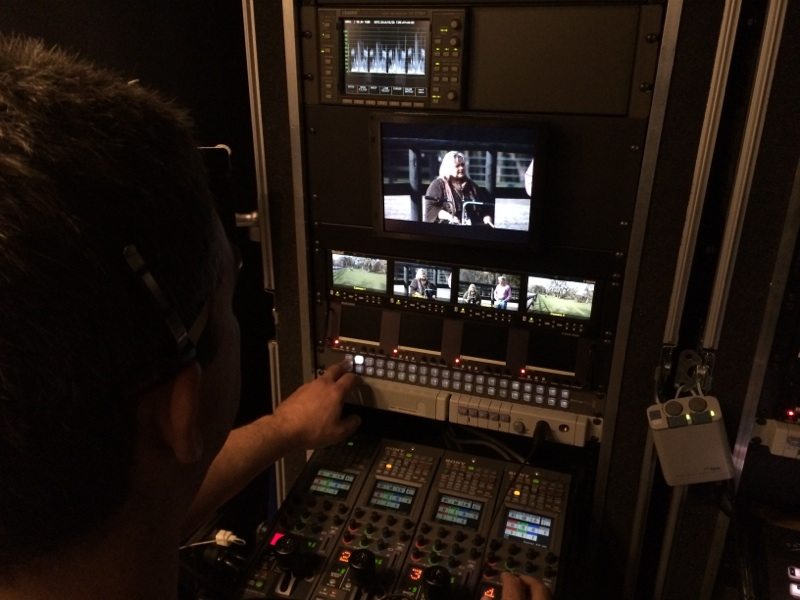
Graphics Operator
This person edits and updates graphics to be used during live productions as well as implementing the graphics during actual production time. Most commonly used graphics are lower thirds, full screen graphics, and animated graphics to mask camera transitions.
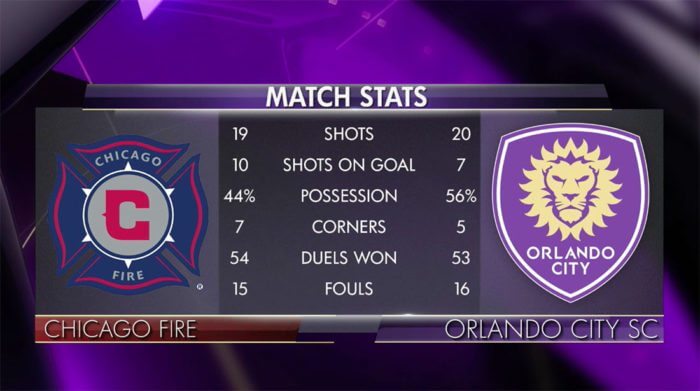
Bug Operator
This person is used for sports coverage. They update the score graphic (score bug) and other game stats such as time keeping. Scores are obtained either from a direct scoreboard feed or locked off POV camera on the scoreboard.
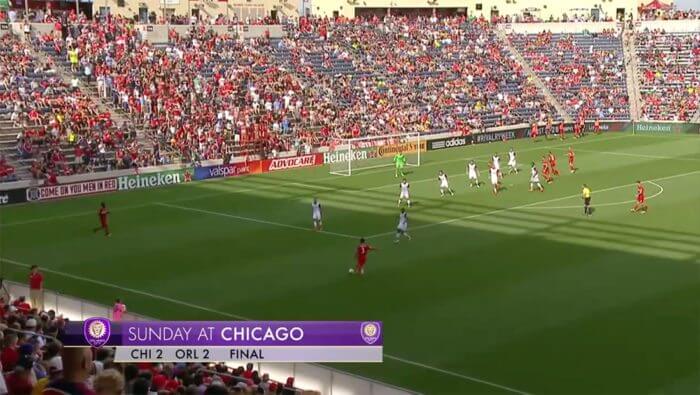
Replay Operator
This person operates the replay decks; they keep footage organized and accessible so they can edit as needed to show the replay footage called for by the TD or Director.
Audio Mixer (A1)
Sources sound from microphones, cameras, pre-recordings, sound effects, etc. to mix and transmit for final broadcast. They also set up and maintain intercoms and headsets for all crew involved in the mobile production shoot.
Audio Assistant (A2)
This person sets up the audio equipment on the field and for talent. They set up the intercom system between stage/announcer booth and the Director. They work under direction of the A1.
Read more: The Rise of Multi-Stream Video Channels: What It Means for Today’s Video Production Service
Camera Ops
Camera ops set up cameras and cabling as well as film on remote location. All camera feeds are then routed to the production truck for handling. The best camera operators will be experienced enough to have an instinct for what should be filmed so that it can be used for broadcast. This makes the Director and Technical Directors job much easier because they don’t have to give as much camera direction on top of everything else they are directing.
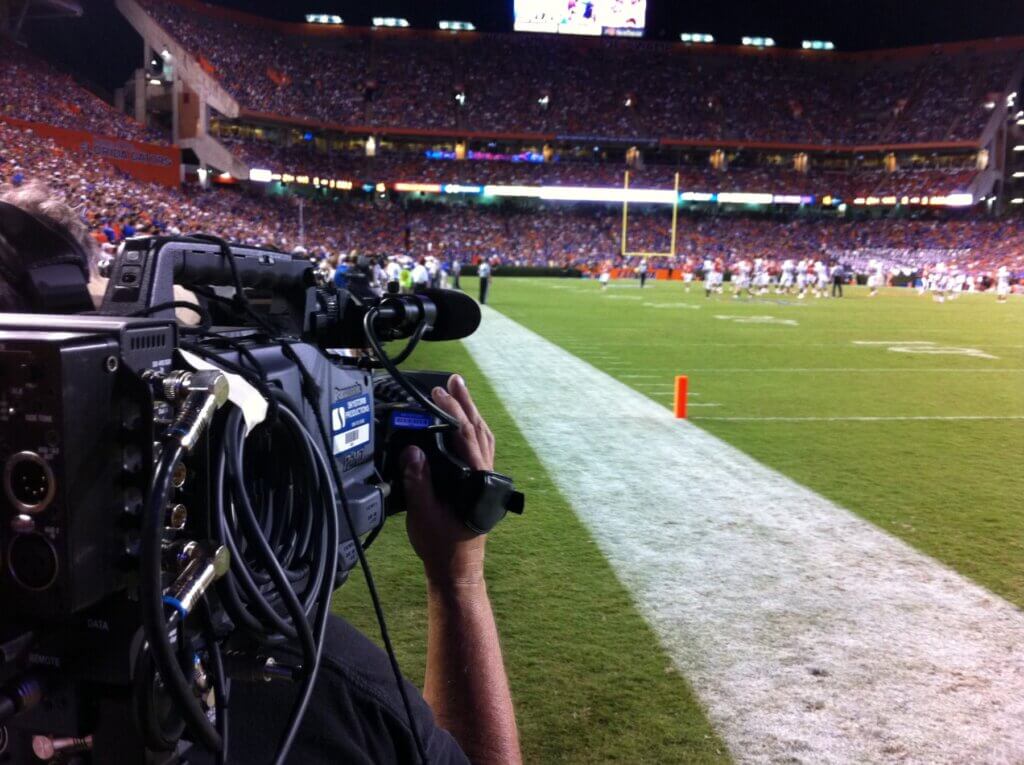
Grips (Utilities)
Grips move the equipment and pull cabling into position. They are critical to the setup and strike process and are an extra set of hands to help in any way needed during production time.
Jib Op
Camera Op that controls jib arm for capturing elevated and large motion shots. This is actually an incredibly difficult job and they are (arguably) the star of the camera crew.
